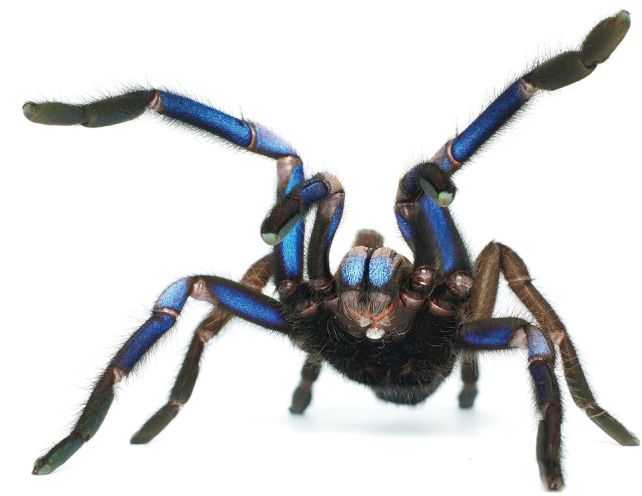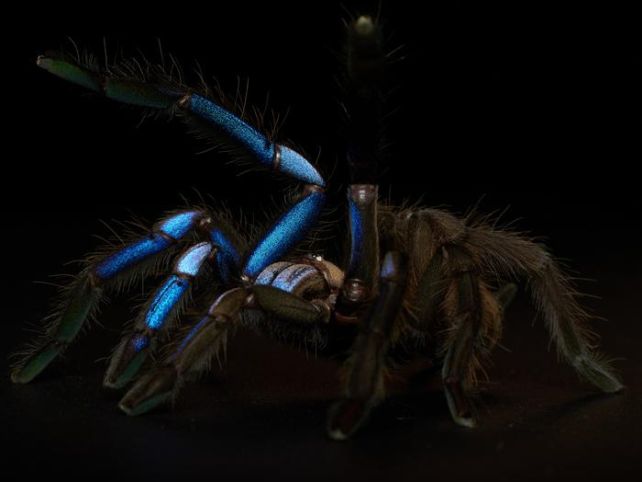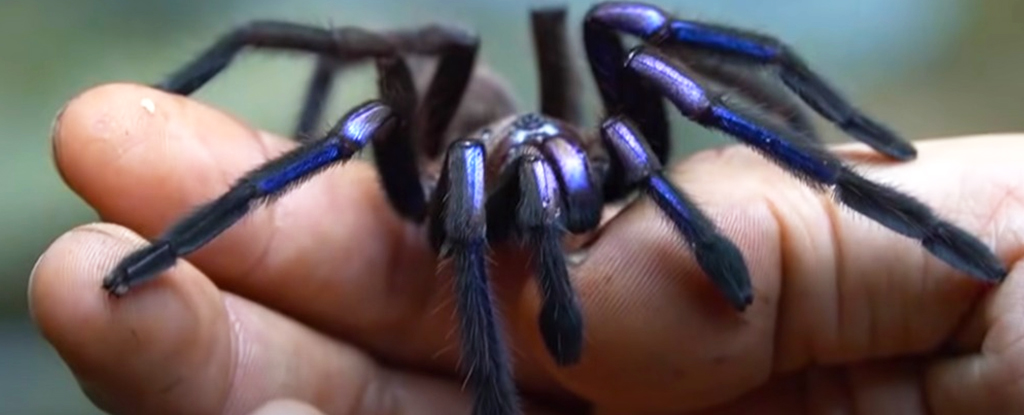Products You May Like
A new species of tarantula found scurrying around the forests of Thailand shimmers with dazzling blue highlights.
Its discoverers have named the beastie Chilobrachys natanicharum, and say it’s the first tarantula ever identified living in Thailand’s mangroves. Findings like these highlight the value of preserving these natural habitats, where unique species have carved out small but important ecological niches.
In fact, the spider had been known for some time in the exotic spider trade, where it was referred to as the Electric Blue Tarantula. However, it had not been formally described, nor did scientists know where the species made its home.
Following the discovery last year of the first tarantula in Thailand known to make its home in bamboo stalks, a Thai team led by arachnologist Narin Chomphuphuang of Khon Kaen University embarked on an expedition to find these blue beauties.

“The first specimen we found was on a tree in the mangrove forest,” Chomphuphuang says.
“These tarantulas inhabit hollow trees, and the difficulty of catching an electric-blue tarantula lies in the need to climb a tree and lure it out of a complex of hollows amid humid and slippery conditions. During our expedition, we walked in the evening and at night during low tide, managing to collect only two of them.”
Blue is one of the rarest colors that appear in nature. Blue flowers are rare; blue leaves are nonexistent. That’s because blue pigment is extremely rare and hard for plants to make. Most blue flowers are the result of the mixing of other pigments.
Blue can be found in animals, primarily in birds, fish, and insects such as butterflies. There are several species of tarantula that have blue coloration too. In this case, the vivid blues are not the result of pigment; rather, they are produced by structural coloring. This is when tiny, nanoscopic structures reflect the light in such a way that it shimmers blue and violet.

The secret of the blue coloration of tarantulas was only discovered a few years ago, and it’s a fascinating one. Different species of tarantula around the world, from distant branches of the tarantula family tree, all seem to shimmer with the same vivid shade of electric blue, even if the nanostructures responsible are different.
We still don’t know how, or why, this is the case, but observing how species in different habitats are patterned, and how they use their blue coloring, may be useful in figuring it out.
Chilobrachys natanicharum has vivid blue and violet markings on its legs, pedipalps, and chelicerae that flash and shimmer when the spider raises its legs, a posture tarantulas assume defensively, or during courting. Recent research has also found that blue tarantulas can perceive the vivid blue color of their conspecifics.
This suggests that the gorgeous colors of Chilobrachys natanicharum are used in spider-to-spider communication, but that can’t be discerned with for sure without further study.
What we do know is that Chilobrachys natanicharum appears to be one of the rarest known tarantula species, and that the mangrove forests it lives in are under threat of deforestation.
“The electric blue tarantula demonstrates remarkable adaptability. These tarantulas can thrive in arboreal as well as terrestrial burrows in evergreen forests. However, when it comes to mangrove forests, their habitat is restricted to residing inside tree hollows due to the influence of tides,” Chomphuphuang says.
“It’s essential for the general public to understand the significance of taxonomy as a fundamental aspect of research. Taxonomy serves a vital role, ranging from the basic, such as when people inquire on social media about the name of a spider, to conducting crucial research aimed at preserving these species from extinction.”
A paper describing the species has been published in ZooKeys.
